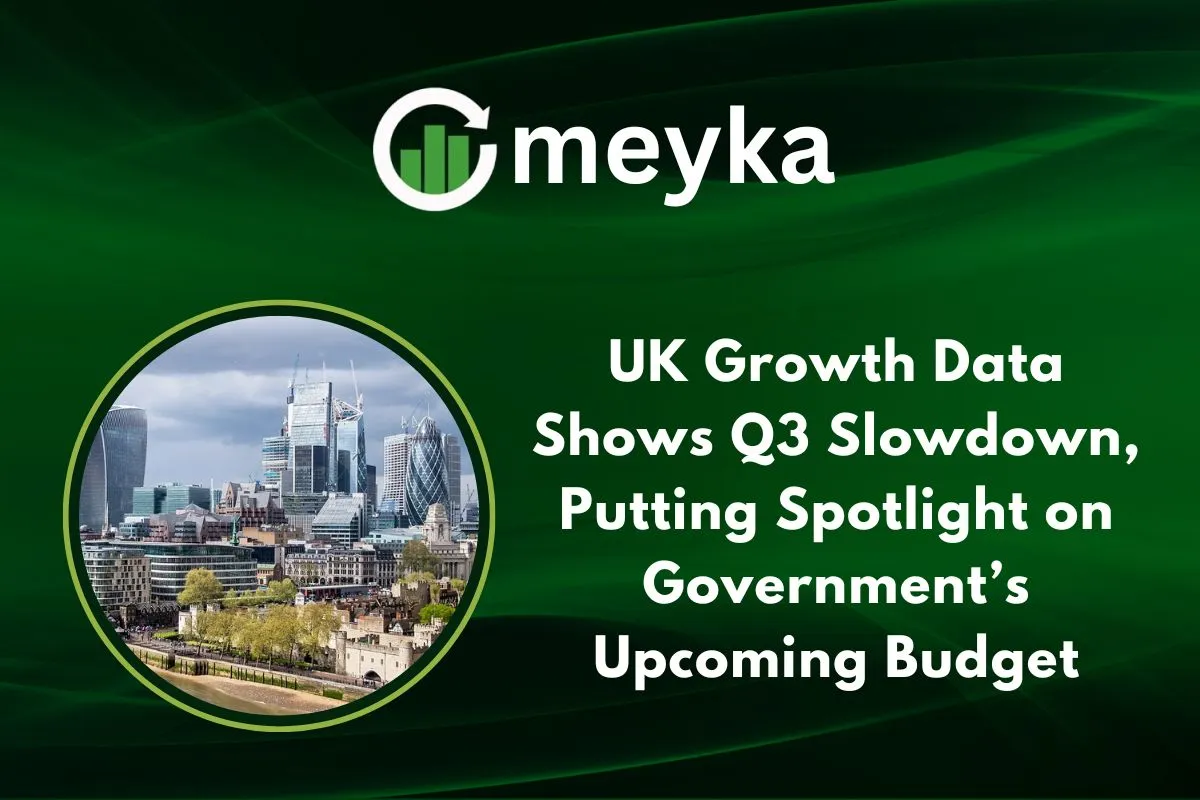UK Growth Data Shows Q3 Slowdown, Putting Spotlight on Government’s Upcoming Budget
We’ve learned that the UK economy grew by only 0.1% in the third quarter of 2025, a sharp slowdown from earlier in the year. This weak growth comes at a crucial moment: the government is preparing its next budget and must decide whether to stimulate the economy or remain cautious with public spending. We will explain what the data really tells us, explore the forces behind the slowdown, and consider what the budget might need to do to turn things around.
Q3 Growth, What the Numbers Show
The latest figures from the Office for National Statistics (ONS) reveal that real gross domestic product (GDP) rose by just 0.1% in the three months from July to September 2025. This is down from a growth of 0.3% in the previous quarter (April to June).
In month-to-month terms, output contracted by 0.1% in September.
Breaking the economy down by sector:
- The production/manufacturing sector fell, and production output dropped by 0.5% in the quarter.
- The services sector grew, but only modestly, about 0.2% for the quarter.
- Construction rose by just 0.1%.
The headline number, 0.1%, signals nearly stalled economic momentum. When growth is that low, the risk of drifting into stagnation rises.
Key Drivers of the Slowdown
Why did growth slow so much? Several forces are at work:
Manufacturing shock
A major factor was the cyber-attack on Jaguar Land Rover (JLR) in September. The incident caused production to drop sharply, with motor and vehicle manufacturing by 28.6% in September. That single event subtracted roughly 0.17 percentage points off September’s GDP and 0.06 points off the whole quarter.
Weak exports and trade
Goods exports fell significantly, including an 11.4% drop in goods exports to the U.S., the lowest since January 2022. Global uncertainty and weaker external demand added headwinds.
Domestic investment and spending are soft.
Business investment declined in the quarter. Confidence among firms has softened. Households have held back spending. Experts say many businesses paused plans ahead of the budget announcements.
Structural constraints
Beyond immediate shocks, the UK faces deeper issues: weak productivity growth, demographic pressures, and higher borrowing costs. The Centre for Economics and Business Research (CEBR) forecasts growth of only about 1.3% for the full year. Together, these elements explain why the “UK Growth” story is now one of concern rather than momentum.
Budget in Focus, What’ at Stake
With the growth data in hand, all eyes turn to the upcoming budget and what the government might do. The Chancellor (Rachel Reeves) must balance multiple priorities: supporting growth, maintaining public finances, and managing borrowing.
Key trade-offs
- Stimulus vs consolidation: With growth so weak, there’s pressure to boost the economy via spending or tax cuts. At the same time, public debt remains high and borrowing cost is elevated.
- Revenue risk: The weak growth means tax receipts may come in lower than expected. That limits the government’s fiscal room.
- Confidence matters: Firms and consumers respond to signals. If tax rises are heavy or austerity too sharp, confidence may fall further, which could hurt growth and make the budget counter-productive.
Possible levers in the budget
- Tax measures: changes in income tax, business tax, incentives for investment.
- Spending on infrastructure, green economy, research & development to boost long-term productivity.
- Support for exports/manufacturing, given trade and production weakness.
- Policies aimed at raising labour and business-investment productivity, as structural growth remains weak.
In short: the bud, et t must do more than plug gaps, itneedsd; to set the stage for growth, and do iso in a tricky environment.
Risks, Opportunities
Risks to keep in mind
- The slowdown could deepen into contraction if business investment and consumer spending don’t pick up.
- If the budget missteps too har,dor if spending cuts undermine growth, the economy may worsen.
- External shocks remain: global trade disruption, inflation surprises, energy and cost shocks.
Opportunities to leverage
- The current slowdown offers a chance to redesign policy with growth as a priority (not just austerity).
- Targeted investment could kick-start lagging sectors (exports, manufacturing, tech).
- If the budget restores confidence and sends clear long-term signs, private investment might rise.
Conclusion
To wrap up: the Q3 growth figure of 0.1% is a clear warning signal. The UK’s economy is losing steam at a critical juncture. With the budget looming, the government faces a narrow path: it needs to stimulate growth and set long-term foundations, but also be mindful of debt, borrowing costs, and fiscal credibility. For us, as workers, consumers, and business owners, the key will be how policy choices affect jobs, investment, and the economy’s direction. The upcoming budget may decide whether “UK Growth” renews momentum or remains stuck in the slow lane.
FAQS
We see that productivity is weak and businesses aren’t investing much. Also global t,, and some weather and cyber shocks hit output hard.
Yes, average pay (excluding bonuses) rose by 4.6% in the three months to September, down slightly from earlier.
The UK has less economic and military heft than in its empire days, and global power is shifting to larger economies with faster growth.
Disclaimer:
The content shared by Meyka AI PTY LTD is solely for research and informational purposes. Meyka is not a financial advisory service, and the information provided should not be considered investment or trading advice.






